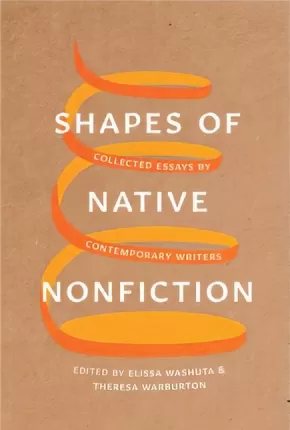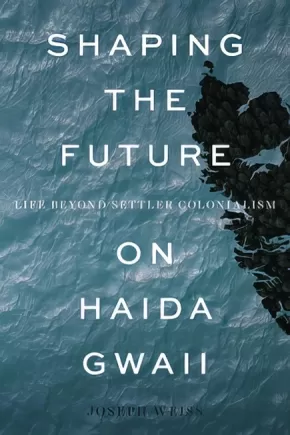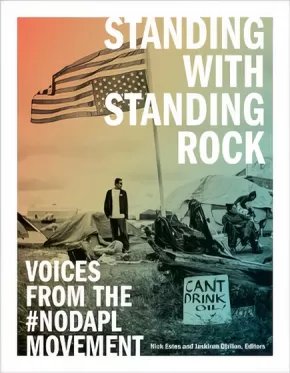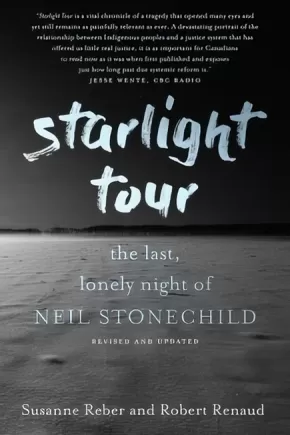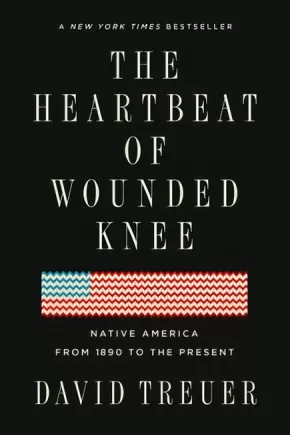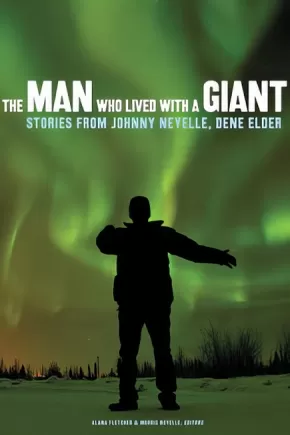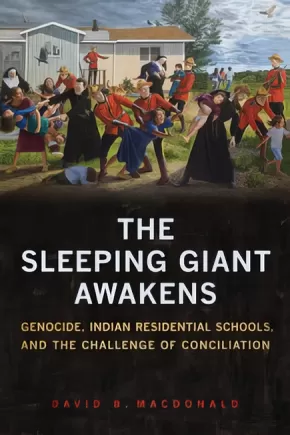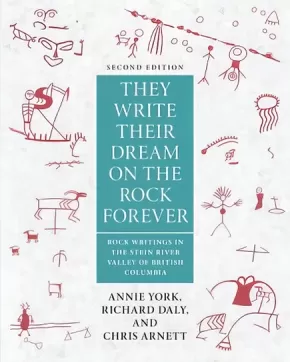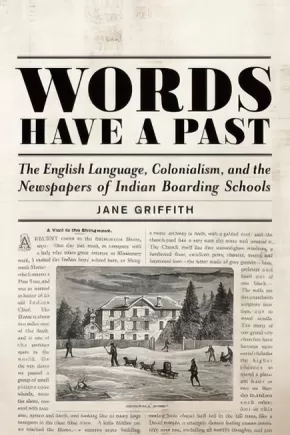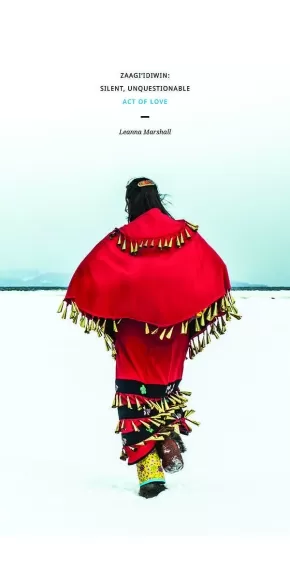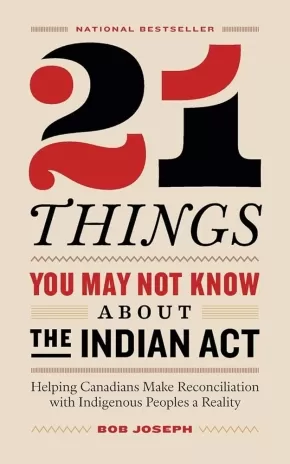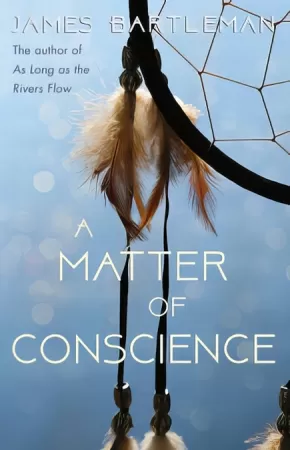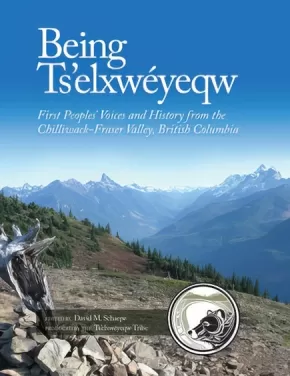Indigenous Awareness
Synopsis:
Just as a basket’s purpose determines its materials, weave, and shape, so too is the purpose of the essay related to its material, weave, and shape. Editors Elissa Washuta and Theresa Warburton ground this anthology of essays by Native writers in the formal art of basket weaving. Using weaving techniques such as coiling and plaiting as organizing themes, the editors have curated an exciting collection of imaginative, world-making lyric essays by twenty-seven contemporary Native writers from tribal nations across Turtle Island into a well-crafted basket.
Shapes of Native Nonfiction features a dynamic combination of established and emerging Native writers, including Stephen Graham Jones, Deborah Miranda, Terese Marie Mailhot, Billy-Ray Belcourt, Eden Robinson, and Kim TallBear. Their ambitious, creative, and visionary work with genre and form demonstrate the slippery, shape-changing possibilities of Native stories. Considered together, they offer responses to broader questions of materiality, orality, spatiality, and temporality that continue to animate the study and practice of distinct Native literary traditions in North America.
Reviews
"In this anthology, shape matters. It turns the essay into a resistant form, pushing against the myth of the ‘disappearing Native’ and asserting a new narrative, one that isn’t subject to colonizing. . . . Shapes of Native Nonfiction is full of cognitive and emotional work. It turns the essay into something alive and breathing." - Cincinnati Review
"The medium is the message in this formally daring anthology of essays from Native writers, organized into basket-weaving themes such as ‘coiling’ and ‘plaiting.’ In these 27 essays by writers hailing from multiple tribal nations, some established and some newcomers, the Native experience is interrogated, elucidated, and celebrated." - Esquire
"In gathering contemporary Native nonfiction, this book elucidates the roots of the form-conscious essay and brings together the exciting current work of Native writers. In a sweeping decolonizing gesture, this anthology challenges the nonfiction canon as it’s been taught and creates a porous new space in its place." - Essay Daily
"Shapes of Native Nonfiction is. . . an accessible, engaging book, both for those who have read widely on the subject and for those seeking a place to begin." - New York Journal of Books
"This new collection of essays from established and emerging contemporary Indigenous writers is stunning both in-depth and scope. . . . The collection, expertly curated and structured by writer and Cowlitz Indian Tribe member Elissa Washuta (whose incredible essay Apocalypse Logic also appears here) and literary scholar Theresa Warburton, shines in every piece and in its existence as a whole. . . . In these pages, storytelling is a way of developing new Native nonfiction literary possibility." - Literary Hub
"Shapes of Native Nonfiction introduces the reader to a unique collection of voices, telling stories that shift from lost to living language, from history to lived experience. These shifts create new shapes for Indigenous writers to inhabit, explore and share. In this anthology, that shaping makes for a powerful read, and an absolutely necessary one" - High Country News
"In this far-ranging collection of essays, Indigenous writers explore family, home, landscape, identity, trauma, history, and memory. Some of the essays are about writing itself. Others tell stories about particular experiences or moments. Still others are more outwardly focused, exploring art, culture, and politics. Part of what makes this book so unique is the various innovative forms the essays take." - Book Riot
Additional Information
302 pages | 6.00" x 9.00" | Paperback
Synopsis:
Colonialism in settler societies such as Canada depends on a certain understanding of the relationship between time and Indigenous peoples. Too often, these peoples have been portrayed as being without a future, destined either to disappear or assimilate into settler society. This book asserts quite the opposite: Indigenous peoples are not in any sense “out of time” in our contemporary world.
Shaping the Future on Haida Gwaii shows how Indigenous peoples in Canada not only continue to have a future but are at work building many different futures – for themselves and for their non-Indigenous neighbours. Through the experiences of the residents of the Haida First Nation community of Old Massett on the islands of Haida Gwaii, Joseph Weiss explores these possible futures in detail, demonstrating how Haida ways of thinking about time, mobility, and political leadership are at the heart of contemporary strategies for addressing the dilemmas that come with life under settler colonialism.
From the threat of ecological crisis to the assertion of sovereign rights and authority, Weiss shows that the Haida people consistently turn towards their possible futures, desirable and undesirable, in order to work out how to live in and transform the present. His book breaks new ground in the exploration of the relationship between time and colonialism as experienced in the day-to-day lives of an Indigenous community.
Educator Information
This book will appeal to scholars and students of Indigenous studies, particularly in anthropology, ethnography, sociology, and history. Researchers planning to work with communities will learn from the author’s reflections on conducting ethnographic fieldwork with First Nations.
This book is the result of five years of fieldwork in Old Massett and Masset with the people of the Haida First Nation.
Reviews
"Grounded in respectful experience, observation, and interviews with Haida citizens, this book provides scholars with a complex understanding and analysis of how one Indigenous community adapts to and maintains a commitment, however difficult, to imagining and enacting a futurity determined by themselves, not settler colonialism. It will be widely read in Indigenous studies circles." - Kevin Bruyneel, author of The Third Space of Sovereignty: The Postcolonial Politics of U.S.-Indigenous Relations
"An engaging, contemporary ethnography … this lively book, with its rich theoretical bases, has the potential to further reconfigure and unsettle problematic ethnographic and popular texts on the Haida, and Indigenous peoples more generally." - Brian Thom, Department of Anthropology, University of Victoria
"In his highly original, carefully written, and theoretically grounded ethnography, Joseph Weiss describes how the people of Haida Gwaii engage in envisioning future-making, an aspirational and contested process that unsettles their own temporal displacement and potential erasure within settler colonialism … Shaping the Future points in a new direction and calls for a rethinking of ethnography as a method and the future of Indigenous nations within the state."- Bruce Miller, author of Oral History on Trial: Recognizing Aboriginal Narratives in the Courts
Additional Information
244 pages | 6.00" x 9.00"
Synopsis:
Dispatches of radical political engagement from people taking a stand against the Dakota Access Pipeline.
It is prophecy. A Black Snake will spread itself across the land, bringing destruction while uniting Indigenous nations. The Dakota Access Pipeline is the Black Snake, crossing the Missouri River north of the Standing Rock Indian Reservation. The oil pipeline united communities along its path—from North Dakota, South Dakota, Iowa, and Illinois—and galvanized a twenty-first-century Indigenous resistance movement marching under the banner Mni Wiconi—Water Is Life! Standing Rock youth issued a call, and millions around the world and thousands of Water Protectors from more than three hundred Native nations answered. Amid the movement to protect the land and the water that millions depend on for life, the Oceti Sakowin (the Dakota, Nakota, and Lakota people) reunited. A nation was reborn with renewed power to protect the environment and support Indigenous grassroots education and organizing. This book assembles the multitude of voices of writers, thinkers, artists, and activists from that movement.
Through poetry and prose, essays, photography, interviews, and polemical interventions, the contributors, including leaders of the Standing Rock movement, reflect on Indigenous history and politics and on the movement’s significance. Their work challenges our understanding of colonial history not simply as “lessons learned” but as essential guideposts for current and future activism.
Contributors: Dave Archambault II, Natalie Avalos, Vanessa Bowen, Alleen Brown, Kevin Bruyneel, Tomoki Mari Birkett, Troy Cochrane, Michelle L. Cook, Deborah Cowen, Andrew Curley, Martin Danyluk, Jaskiran Dhillon, Roxanne Dunbar-Ortiz, Liz Ellis, Nick Estes, Marcella Gilbert, Sandy Grande, Craig Howe, Elise Hunchuck, Michelle Latimer, Layli Long Soldier, David Uahikeaikalei‘ohu Maile, Jason Mancini, Sarah Sunshine Manning, Katie Mazer, Teresa Montoya, Chris Newell, The NYC Stands with Standing Rock Collective, Jeffrey Ostler, Will Parrish, Shiri Pasternak, endawnis Spears, Alice Speri, Anne Spice, Kim TallBear, Mark L. Tilsen, Edward Valandra, Joel Waters, Tyler Young.
Reviews
"As our songs and prayers echo across the prairie, we need the public to see that in standing up for our rights, we do so on behalf of the millions of Americans who will be affected by this pipeline."—David Archambault II, from the interior
"There is no alternative to water. There is no alternative to this Earth. This fight has become my life, and it’s not over. I think this is only the beginning for me, for all of us. Do you want a future for your children and grandchildren? If you want them to have a future then stand with Standing Rock because this is just the beginning of a revolution."—Zaysha Grinnell, from the interior
"We will put our best warriors in the front. We are the vanguard. We are the Hunkpapa Lakota. That means the horn of the buffalo. That’s who we are. We are protectors of our nation of Oceti Sakowin, the Seven Council Fires. Know who we are."—Phyllis Young
Additional Information
448 pages | 7.00" x 9.00"
Synopsis:
A teen's suspicious death, a shocking police cover-up and a mother's search for truth: this landmark investigation into justice and Canada's Indigenous people is re-issued and updated here for the first time in over a decade.
In 1990, on a brutally cold night, 17-year-old Neil Stonechild disappeared from downtown Saskatoon, last seen in police custody. His frozen body was found three days later in a field outside town. Though his mother pressed for answers, a cursory investigation pinned the blame on the teen himself, dead by alcohol and misadventure. Only in 2000, when two more men were found frozen to death, and a third survived his "starlight tour" at the hands of police, did the truth about Stonechild's fate begin to emerge. Soon one of the country's most prominent Indigenous lawyers was on the case, and an open secret was secret no more.
With exclusive co-operation from the Stonechild family, lawyer Donald Worme, and others, Starlight Tour is an engrossing portrait of rogue cops, racism, obstruction of justice and justice denied, not only to a boy and his family but to an entire nation.
Reviews
“For justice junkies like myself, this is a deeply engrossing account…. Should be compulsory reading for Canadian police recruits from sea to shining sea.” –William Deverell, The Globe and Mail
“The Stonechild story is ably captured by veteran CBC journalists Susanne Reber and Robert Renaud in a thoroughly researched, deftly written work…. A powerfully written, meticulously researched work with a cinematic feel, which should be on reading lists for students of Canadian history, journalism or law enforcement.” –Toronto Star
“The suspenseful and meticulous account of a very real and dark chapter in Canada’s modern history.” –TIME (Canada)
Additional Information
448 pages | 6.04" x 8.98"
Synopsis:
"Chapter after chapter, it's like one shattered myth after another." - NPR
A New York Times bestseller: The sweeping history–and counter-narrative–of Native American life from the Wounded Knee massacre to the present.
The received idea of Native American history–as promulgated by books like Dee Brown’s mega-bestselling 1970 Bury My Heart at Wounded Knee–has been that it essentially ended with the 1890 massacre at Wounded Knee. Not only did one hundred fifty Sioux die at the hands of the U. S. Cavalry, the sense was, but Native civilization did as well. Growing up Ojibwe on a reservation in Minnesota, training as an anthropologist, and researching Native life past and present for his nonfiction and novels, David Treuer has uncovered a different narrative, one of unprecedented resourcefulness and reinvention.
Melding history with reportage and memoir, Treuer traces the tribes’ distinctive cultures from first contact, exploring how the depredations of each era spawned new modes of survival. The devastating seizures of land gave rise to sophisticated legal and political maneuvering that put the lie to the myth that Indians don’t know or care about property. The forced assimilation of their children at government-run boarding schools incubated a unifying Native identity. Conscription in the US military and the pull of urban life brought Indians into the mainstream, even as it steered the emerging shape of self-rule and spawned a new generation of resistance. The Heartbeat of Wounded Knee is the essential, intimate story of a resilient people in a transformative era.
Reviews
“An informed, moving and kaleidoscopic portrait of ‘Indian survival, resilience, adaptability, pride and place in modern life.’ Rarely has a single volume in Native American history attempted such comprehensiveness . . . Ultimately, Treuer’s powerful book suggests the need for soul-searching about the meanings of American history and the stories we tell ourselves about this nation’s past.” —New York Times Book Review
“In a marvel of research and storytelling, an Ojibwe writer traces the dawning of a new resistance movement born of deep pride and a reverence for tradition. Treuer’s chronicle of rebellion and resilience is a manifesto and rallying cry.” —O, The Oprah Magazine
“Treuer is an easy companion: thoughtful, provocative and challenging. He tells a disturbing yet heroic story that may very well be seen as a definition of ‘American exceptionalism.’” —Washington Post
“Sweeping, essential history...Treuer’s storytelling skills shine...[an] elegant handling of [a] complex narrative.” —The Economist
“Treuer provides a sweeping account of how the trope of the vanishing Indian has distorted our current understanding of Native peoples. Instead of seeing Wounded Knee as the final chapter, he recovers the importance of World War II, urban migration, casinos, and the computer age in reshaping the modern Native American experience. The Heartbeat of Wounded Knee is written with conviction and illuminates the past in a deeply compelling way.” —Nancy Isenberg, author of White Trash: The 400-Year Untold History of Class in America
“An ambitious, gripping, and elegantly written synthesis that is much more than the sum of its excellent parts—which include a rich array of Native lives, Treuer’s own family and tribe among them--The Heartbeat of Wounded Knee brings a recognition of indigenous vitality and futurity to a century of modern Indian history.” —Philip J. Deloria, Professor of History, Harvard University
Additional Information
528 pages | 5.50" x 8.25" | 11 maps and photos throughout
Synopsis:
Our parents always taught us well. They told us to look on the good side of life and to accept what has to happen.
The Man Who Lived with a Giant presents traditional and personal stories told by Johnny Neyelle, a respected Dene storyteller and Elder from Déline, Northwest Territories. Johnny Neyelle used storytelling to teach Dene youth and others to understand and celebrate Dene traditions and identities. Johnny’s entertaining voice makes his stories accessible to readers young and old, and his wisdom reinforces the right way to live: in harmony with people and places. Storytelling forms the core of Dene knowledge-keeping. A volume dedicated to making Dene culture strong, The Man Who Lived with a Giant is a vital book for Dene readers, researchers working with Indigenous cultures and oral histories, and scholars preserving Elders’ stories. Even more, it is a book for the Dene people of today and tomorrow.
Additional Information
152 pages | 6.00" x 9.00"
Synopsis:
A qaggiq, or large communal iglu, is a place of community renewal and celebration.
In many Inuit communities late winter and early spring gatherings, with all the markers of Qaggiq, have persisted through modernization. The Qaggiq process has always been used to share news and knowledge, and to enjoy feasts and friendly skill-building competitions. They are also forums for community justice and healing work. Qaggiq is at the centre of renewal, as it begins when people have survived another winter.
In The Qaggiq Model, Janet Tamalik McGrath considers how the structure and symbolism of the Qaggiq can be used to understand Inuit-centred methodologies toward enhanced wellbeing in Inuit communities.
Drawing on interviews with the late philosopher and Inuit elder Mariano Aupilarjuk, along with her own life—long experiences, McGrath bridges Inuktut and Western academic ways of knowing. She addresses the question of how Inuktut knowledge renewal can be supported on its own terms. It is through an understanding of Inuktut knowledge renewal, McGrath argues, that the impacts of colonialism and capitalism can be more effectively critiqued in Inuit Nunangat.
The Qaggiq Model offers new ways of seeing how Inuit-centred spaces can be created and supported toward communal well-being. This wide-ranging work will be of interest to scholars of epistemology, Indigenous studies, and Canadian studies, as well as all readers with an interest in Inuit worldviews.
Additional Information
410 pages | 6.00" x 9.00" | English with Inuktitut Transcripts
Synopsis:
Confronting the truths of Canada’s Indian Residential School system has been likened to waking a sleeping giant. In this book, David B. MacDonald uses genocide as an analytical tool to better understand Canada’s past and present relationships between settlers and Indigenous peoples. Starting with a discussion of how genocide is defined in domestic and international law, the book applies the concept to the forced transfer of Indigenous children to residential schools and the "Sixties Scoop," in which Indigenous children were taken from their communities and placed in foster homes or adopted.
Based on archival research and extensive interviews with residential school survivors, officials at the Truth and Reconciliation Commission of Canada, and others, The Sleeping Giant Awakens offers a unique and timely perspective on the prospects for conciliation after genocide, exploring how moving forward together is difficult in a context where many settlers know little of the residential schools and the ongoing legacies of colonization, and need to have a better conception of Indigenous rights. It offers a detailed analysis of how the TRC approached genocide in its deliberations and in the Final Report.
Crucially, MacDonald engages critics who argue that the term genocide impedes understanding of the IRS system and imperils prospects for conciliation. By contrast, this book sees genocide recognition as an important basis for meaningful discussions of how to engage Indigenous-settler relations in respectful and proactive ways.
Additional Information
224 pages | 6.00" x 9.00"
Synopsis:
In They Write Their Dreams on the Rock Forever, ‘Nlaka’pamux elder Annie York explains the red-ochre inscriptions written on the rocks and cliffs of the lower Stein Valley in British Columbia. This is perhaps the first time that a Native elder has presented a detailed and comprehensive explanation of rock-art images from her people’s culture. As Annie York’s narratives unfold, we are taken back to the fresh wonder of childhood, as well as to a time in human society when people and animals lived together in one psychic dimension.
This book describes, among many other things, the solitary spiritual meditations of young people in the mountains, once considered essential education. Astrological predictions, herbal medicine, winter spirit dancing, hunting, shamanism, respect for nature, midwifery, birth and death, are some of the topics that emerge from Annie’s reading of the trail signs and other cultural symbols painted on the rocks. She firmly believed that this knowledge should be published so that the general public could understand why, as she put it, “The Old People reverenced those sacred places like that Stein.”
They Write Their Dreams on the Rock Forever opens a discussion of some of the issues in rock-art research that relate to “notating” and “writing” on the landscape, around the world and through the millennia. This landmark publication presents a well-reasoned hypothesis to explain the evolution of symbolic or iconic writing from sign language, trail signs and from the geometric and iconic imagery of the dreams and visions of shamans and neophyte hunters. This book suggests that the resultant images, written or painted on stone, constitute a Protoliteracy which has assisted both the conceptualization and communication of hunting peoples’ histories, philosophies, morals and ways life, and prepared the human mind for the economic, sociological and intellectual developments, including alphabetic written language.
Additional Information
320 pages | 6.75" x 9.75" | 2nd Edition
Synopsis:
For nearly 100 years, Indian boarding schools in Canada and the US produced newspapers read by white settlers, government officials, and Indigenous parents. These newspapers were used as a settler colonial tool, yet within these tightly controlled narratives there also existed sites of resistance. This book traces colonial narratives of language, time, and place from the nineteenth-century to the present day, post-Truth and Reconciliation Commission.
Educator Information
1. Bury the Lede: Introduction
2. Printer’s Devil: The Trade of Newspapers
3. Indigenous Languages Did Not Disappear: English Language Instruction
4. "Getting Indian Words": Representations of Indigenous Languages
5. Ahead by a Century: Time on Paper
6. Anachronism: Reading the Nineteenth Century Today
7. Layout: Space, Place, and Land
8. Concluding Thoughts
Additional Information
256 pages | 6.00" x 9.00"
Synopsis:
Zaagi'idiwin: Silent, Unquestionable Act of Love, creates an intersection where viewers meet to understand and explore the essence of relationships, the meaning of connection/disconnection, and the pain of loss. Through the making and documentation of jingle dresses, Marshall explores the deeply personal stories that have shaped her perception of the complexities of her family history in the context of Canadian history. The social inequities, resistance, and sorrow communicated in this body of work serve as a springboard to examine the act of compassion and forgiveness, which ultimately helps to move forward to a new and more affirmative place of being.
Additional Information
28 pages | 5.25" x 10.50"
Synopsis:
Based on a viral article, 21 Things You May Not Know About the Indian Act is the essential guide to understanding the legal document and its repercussion on generations of Indigenous Peoples, written by a leading cultural sensitivity trainer.
Since its creation in 1876, the Indian Act has shaped, controlled, and constrained the lives and opportunities of Indigenous Peoples, and is at the root of many enduring stereotypes. Bob Joseph’s book comes at a key time in the reconciliation process, when awareness from both Indigenous and non-Indigenous communities is at a crescendo. Joseph explains how Indigenous Peoples can step out from under the Indian Act and return to self-government, self-determination, and self-reliance—and why doing so would result in a better country for every Canadian. He dissects the complex issues around truth and reconciliation, and clearly demonstrates why learning about the Indian Act’s cruel, enduring legacy is essential for the country to move toward true reconciliation.
Reviews
"Increasing Canadians' knowledge about the terrible foundation this country has been built on is a critical part of reconciliation. Bob Joseph has highlighted some of the unbelievable provisions of the Indian Act and how they have impacted First Nations in Canada and gives a brief overview of what we may replace it with going forward. His book provides helpful context to the dialogue that needs to take place in Canada." — Kim Baird, O.C., O. B. C.; Owner, Kim Baird Strategic Consulting; Member of the Tsawwassen First Nation; Negotiator of the Tsawwassen First Nation Treaty
"From declaring cultural ceremonies illegal, to prohibiting pool hall owners from granting Indigenous people entrance, from forbidding the speaking of Indigenous languages, to the devastating policy that created residential schools, Bob Joseph reveals the hold this paternalistic act, with its roots in the 1800s, still has on the lives of Indigenous people in Canada in the 21st century. This straightforward book is an invaluable resource. There is much for non-Indigenous people to learn and to do. But equally important, there is much to unlearn and to undo. The time is right for this book. Thank you, Bob Joseph. Gilakasla." — Shelagh Rogers, O.C.; Truth and Reconciliation Commission of Canada Honourary Witness
"Bob’s ability to navigate the complex history of the Indian Act is a wonder to behold. He provides depth and knowledge for Indigenous and non-Indigenous scholars alike. Whether you are an Indigenous scholar or a neophyte, his articulate, insightful and comprehensive analysis on the history of the Indian Act provides a sound understanding on the present narrative of Indigenous peoples in Canada. By way of the Indian Act, this book provides an excellent analysis of the ongoing relationship and predicament between provincial and federal governments and Indigenous peoples in the 21st century." — JP Gladu, President and CEO of the Canadian Council for Aboriginal Business
Educator Information
Recommended in the Canadian Indigenous Books for Schools 2019-2020 resource list as being useful for grades 4-12 and as a teacher resource in these subject areas: English Language Arts and Social Studies.
Additional Information
160 pages | 5.22" x 8.05"
Synopsis:
A novel of love and betrayal dealing with the biggest issues facing Canada’s Indigenous peoples today.
In the summer of 1972, a float plane carrying a team of child welfare officials lands on a river flowing through the Yellow Dog Indian reserve. Their mission is to seize the twin babies of an Indigenous couple as part of an illegal scheme cooked up by the federal government to adopt out tens of thousands of Native children to white families. The baby girl, Brenda, is adopted and raised by a white family in Orillia.
Meanwhile, that same summer, a baby boy named Greg is born to a white middle-class family. At the age of eighteen, Greg leaves home for the first time to earn money to help pay for his university expenses. He drinks heavily and becomes embroiled in the murder of a female student from a residential school.
The destinies of Brenda and Greg intersect in this novel of passion, confronting the murder and disappearance of Indigenous women and the infamous Sixties Scoop.
Reviews
"James Bartleman, a First Nation person himself, writes movingly … about the tragic reality of misogynistic racism and violence against Indigenous women and girls." — Sharon Stinson Henry, Chief of Chippewas of Rama First Nation
Forces us to confront uncomfortable truths as we seek a path to reconciliation. — Alan Bowker, author of A Time Such as There Never Was Before
Bartleman’s strength as a writer is his compassion. He respects each of his characters and sets the stage for real-world discussions of Canada’s past, present, and future. — Publishers Weekly
Educator Information
A Reader's Guide includes discussion of Sixties Scoop and the Truth and Reconciliation Commission.
The Candian Indigenous Books for Schools list recommends this resource for Grades 10-12 English Language Arts.
Caution: Thi book could trigger some readers because of disturbing topics.
Additional Information
272 pages | 5.50" x 8.50"
Synopsis:
Every single year in Canada, one-third of all deaths among Indigenous youth are due to suicide. Studies indicate youth between the ages of ten and nineteen, living on reserve, are five to six times more likely to commit suicide than their peers in the rest of the population. Suicide is a new behaviour for First Nations people. There is no record of any suicide epidemics prior to the establishment of the 130 residential schools across Canada.
Bestselling and award-winning author Tanya Talaga argues that the aftershocks of cultural genocide have resulted in a disturbing rise in youth suicides in Indigenous communities in Canada and beyond. She examinees the tragic reality of children feeling so hopeless they want to die, of kids perishing in clusters, forming suicide pacts, or becoming romanced by the notion of dying — a phenomenon that experts call “suicidal ideation.” She also looks at the rising global crisis, as evidenced by the high suicide rates among the Inuit of Greenland and Aboriginal youth in Australia. Finally, she documents suicide prevention strategies in Nunavut, Seabird Island, and Greenland; Facebook’s development of AI software to actively link kids in crisis with mental health providers; and the push by First Nations leadership in Northern Ontario for a new national health strategy that could ultimately lead communities towards healing from the pain of suicide.
Based on her Atkinson Fellowship in Public Policy series, Tanya Talaga’s 2018 Massey Lectures is a powerful call for action and justice for Indigenous communities and youth.
Educator Information
Curriculum Connections: Indigenous Studies, History, Humanities and Social Sciences, Health
Additional Information
320 pages | 5.00" x 8.00"
Synopsis:
“Our stories identify for us the land which surrounds us and tie us to our ancestors. We find ourselves inextricably linked to the past, to the land, to the river, to each other, to the future.” —Shirley Hardman, contributor
This impressive volume tells of the First Peoples of the area through vivid narratives from the past and present.
The traditional territory of the Ts’elxwéyeqw First Peoples covers over 95,000 hectares of land in Southwestern BC. It extends throughout the central Fraser Valley, encompassing the entire Chilliwack River Valley (including Chilliwack Lake, Chilliwack River, Cultus Lake and areas, and parts of the Chilliwack municipal areas). In addition to being an area of natural beauty and abundant resources, it also has a rich cultural history. The Chilliwack region gets its name from the Ts’elxwéyeqw tribe, and this volume delves into what this name means—and also what it means to be Ts’elxwéyeqw. Being Ts’elxwéyeqw portrays the people, artifacts and landscapes that are central to the Ts’elxwéyeqw people, and represents a rich oral record of an aboriginal heritage that has been kept alive—even through adversity—for thousands of years.
Lavishly illustrated with over seven hundred historic and current photos and maps, this book amalgamates a variety of voices and personal histories from elders, while providing background into eighty-five place names within the region. The book’s unique composition—with an emphasis on visual storytelling—showcases a culture with a deep connection to the surrounding land and the watershed.
Educator Information
Recommended for Grades 5-12 for the following subject areas: Geography, Social Studies, Science. Also a useful Teacher Resource.
Note: Educators should pre-read sections of this book that they are considering using from this reference book, as reading levels vary greatly.
Additional Information
304 pages | 11.00" x 14.00"

